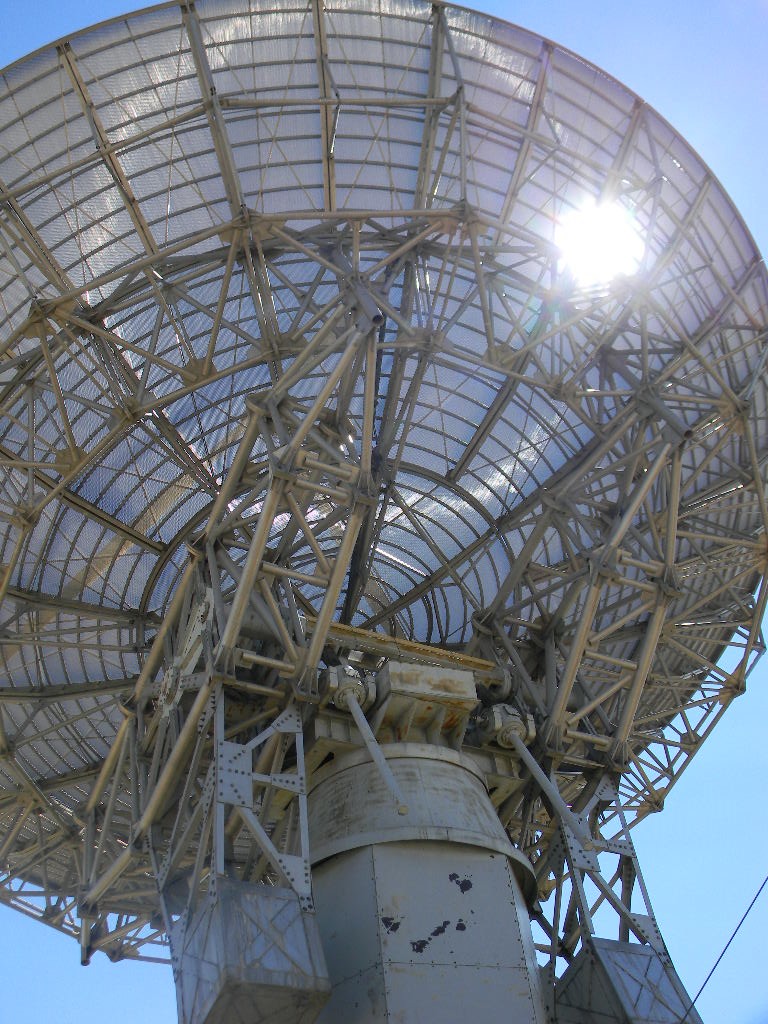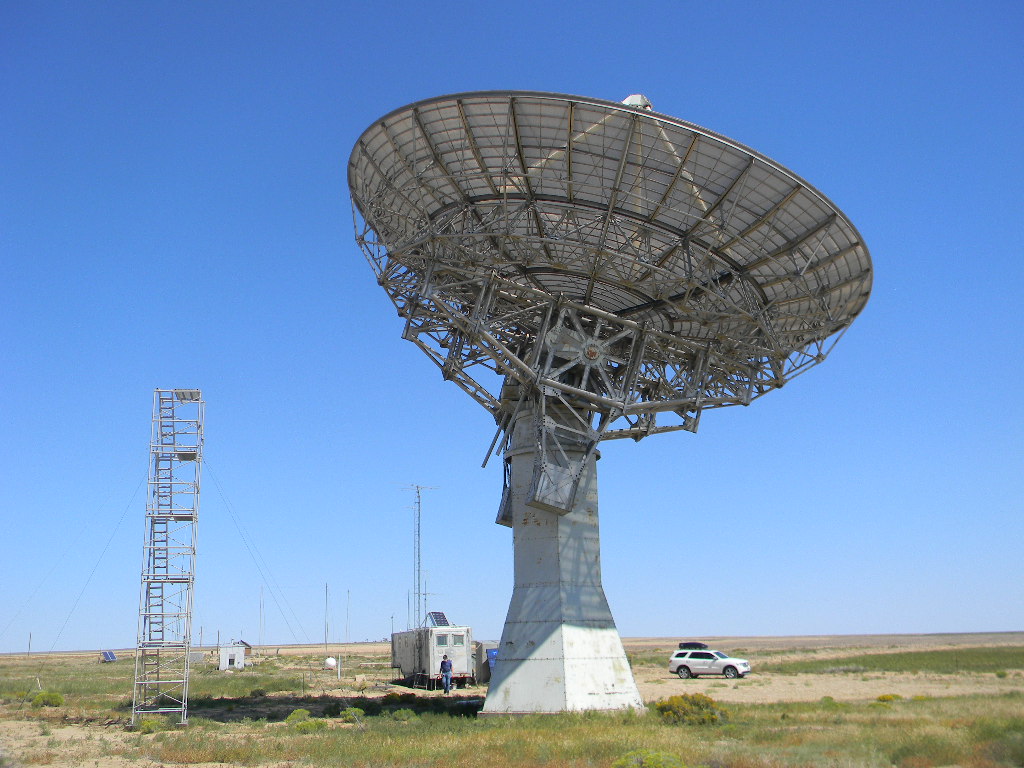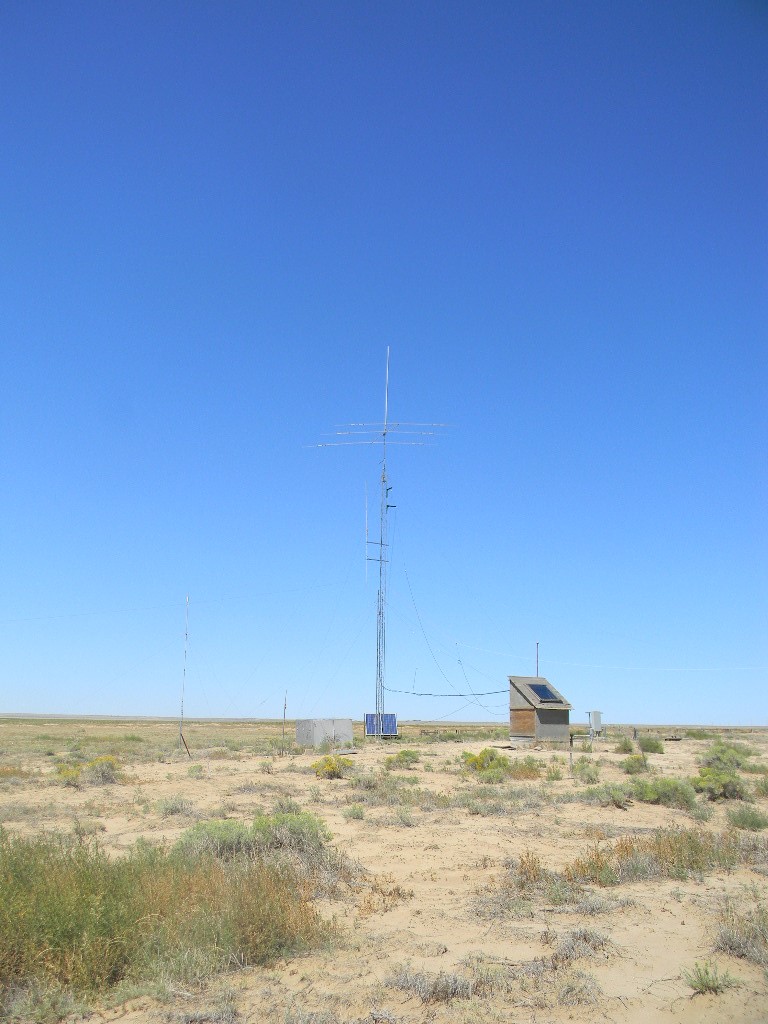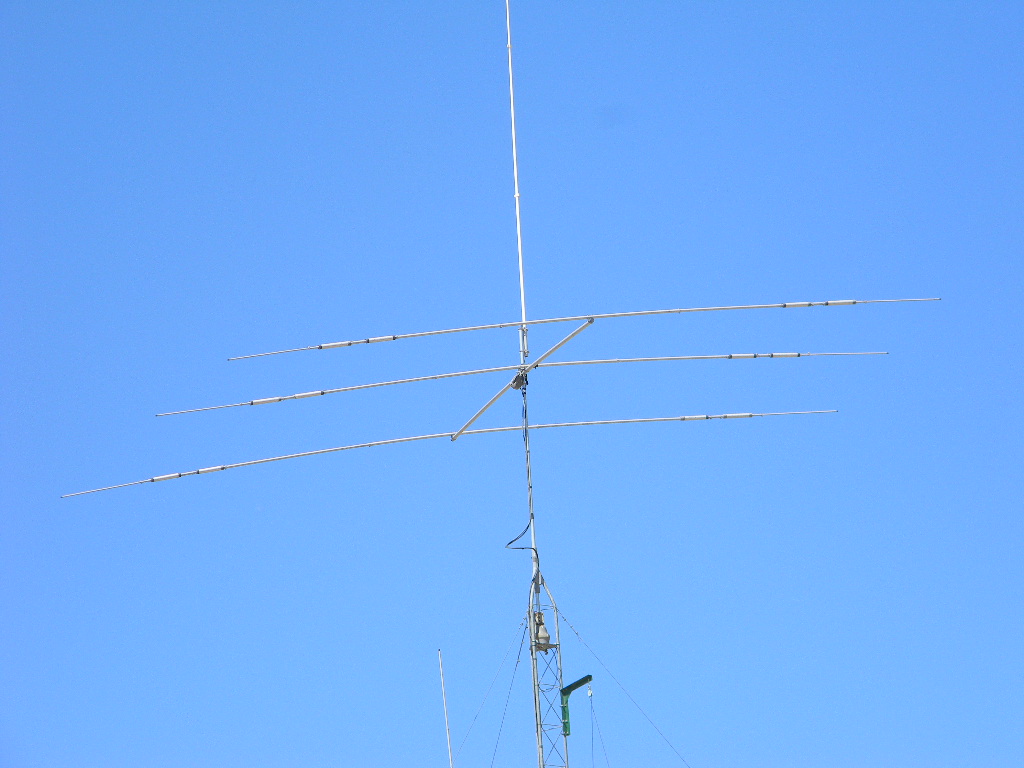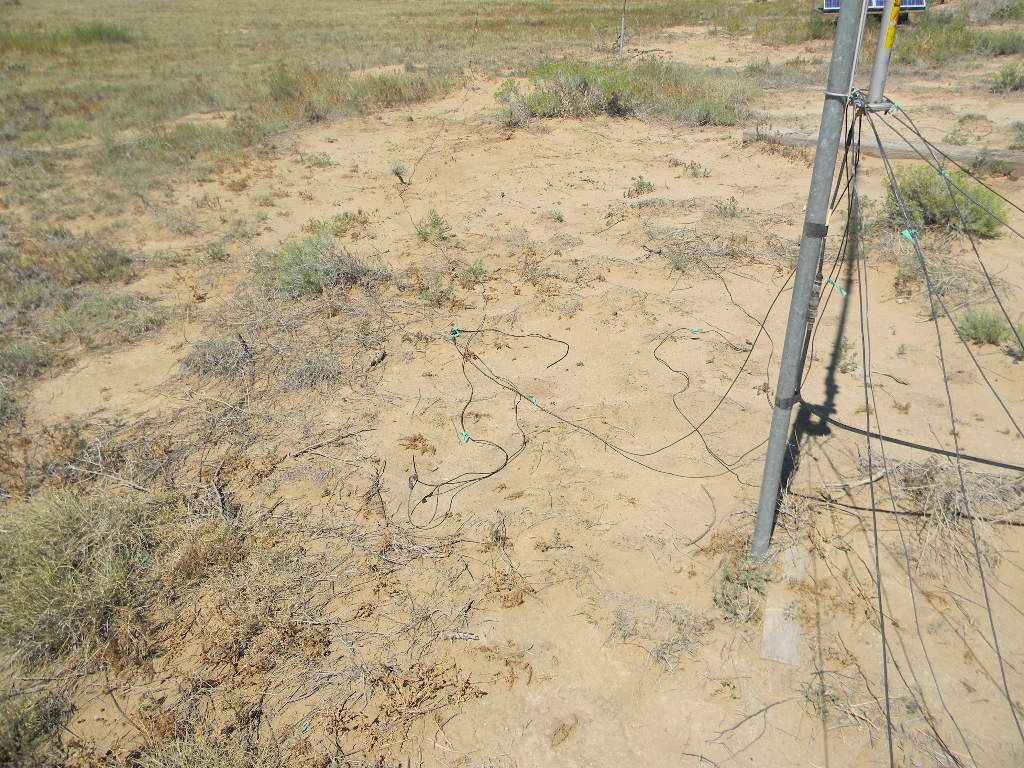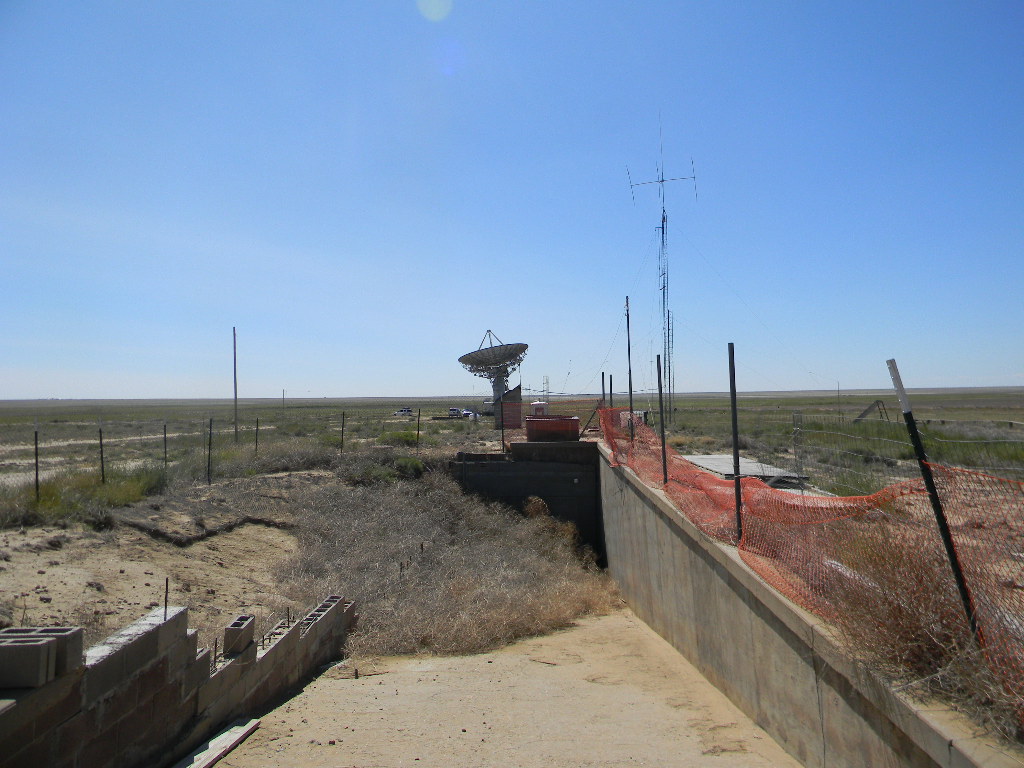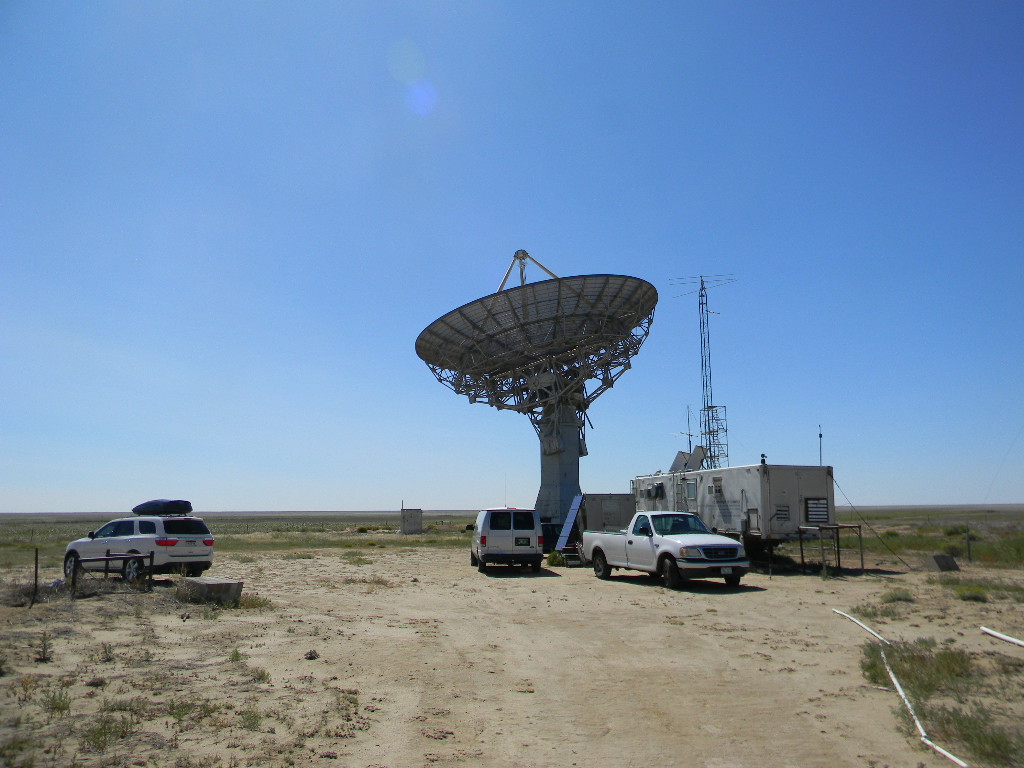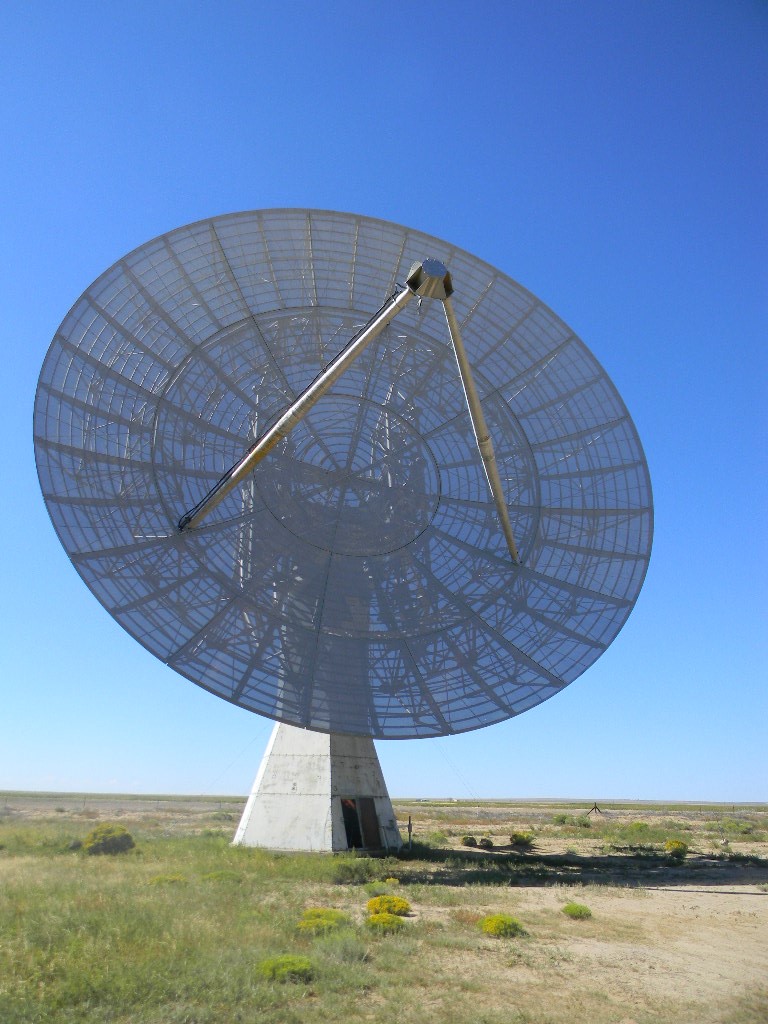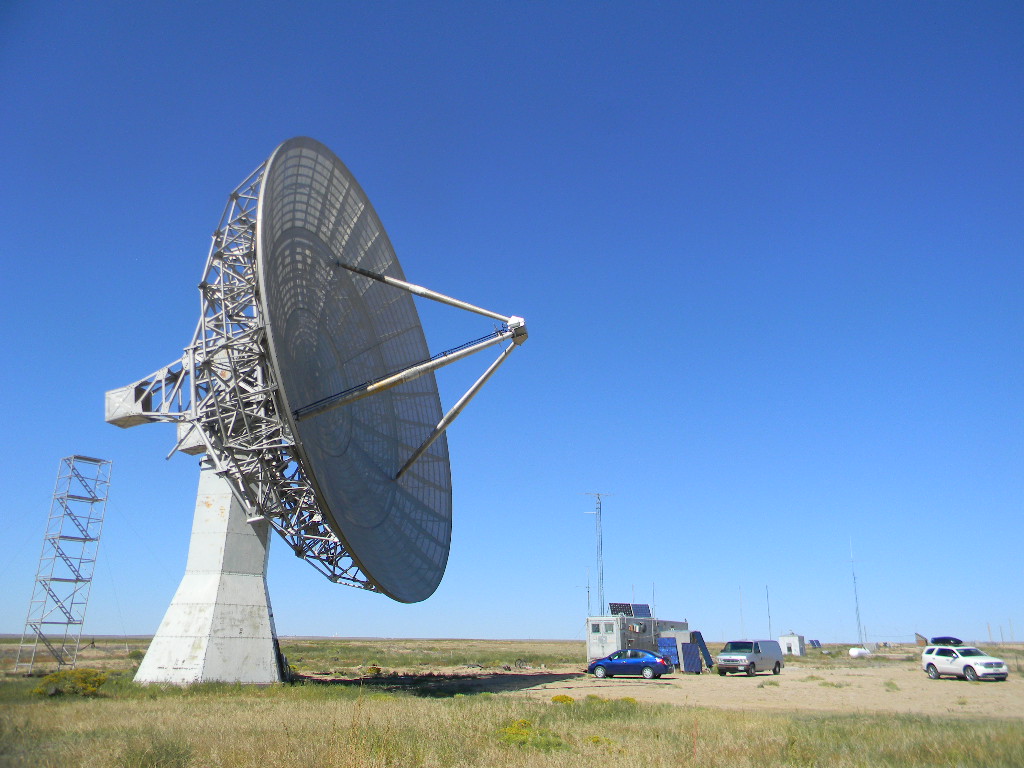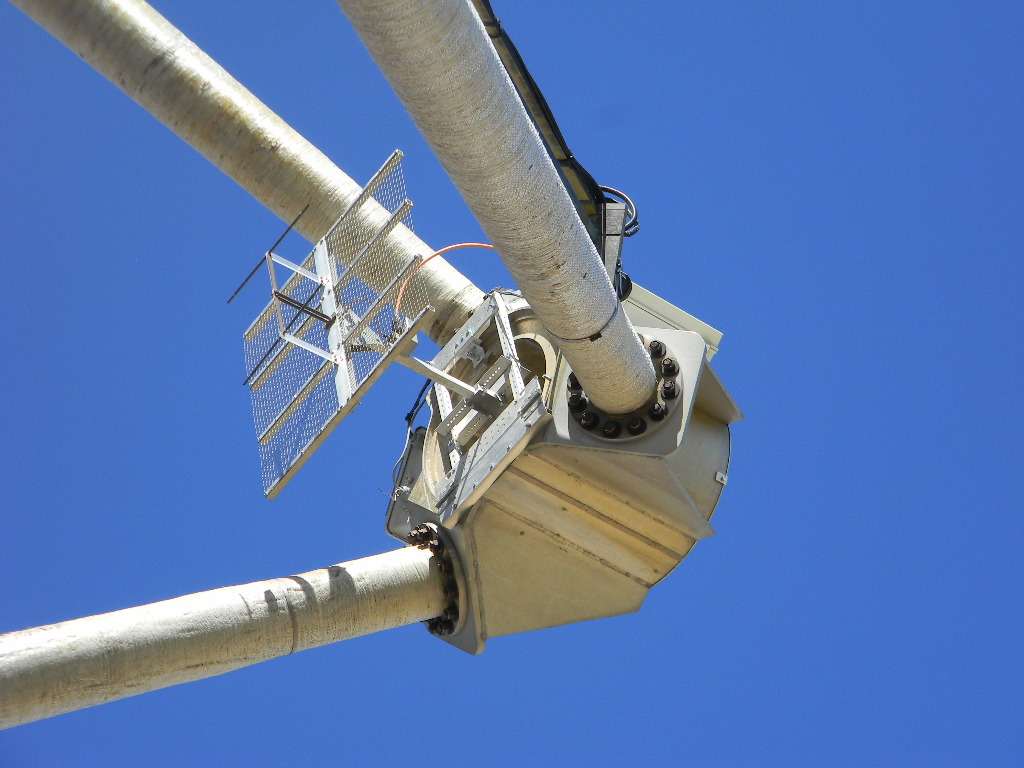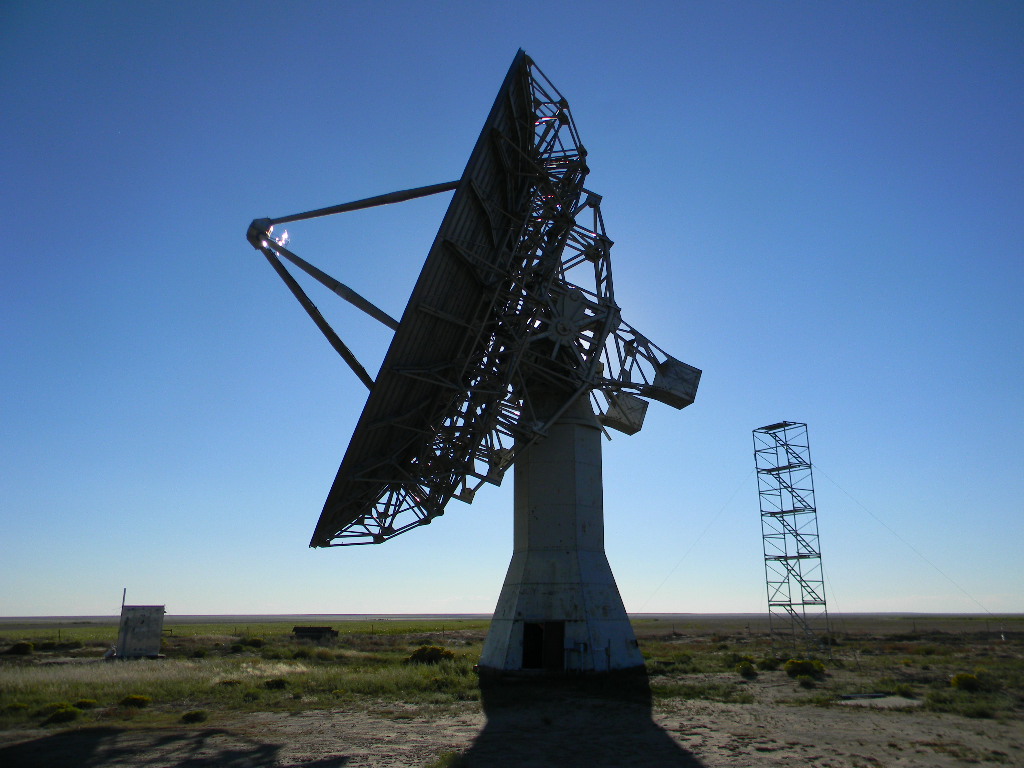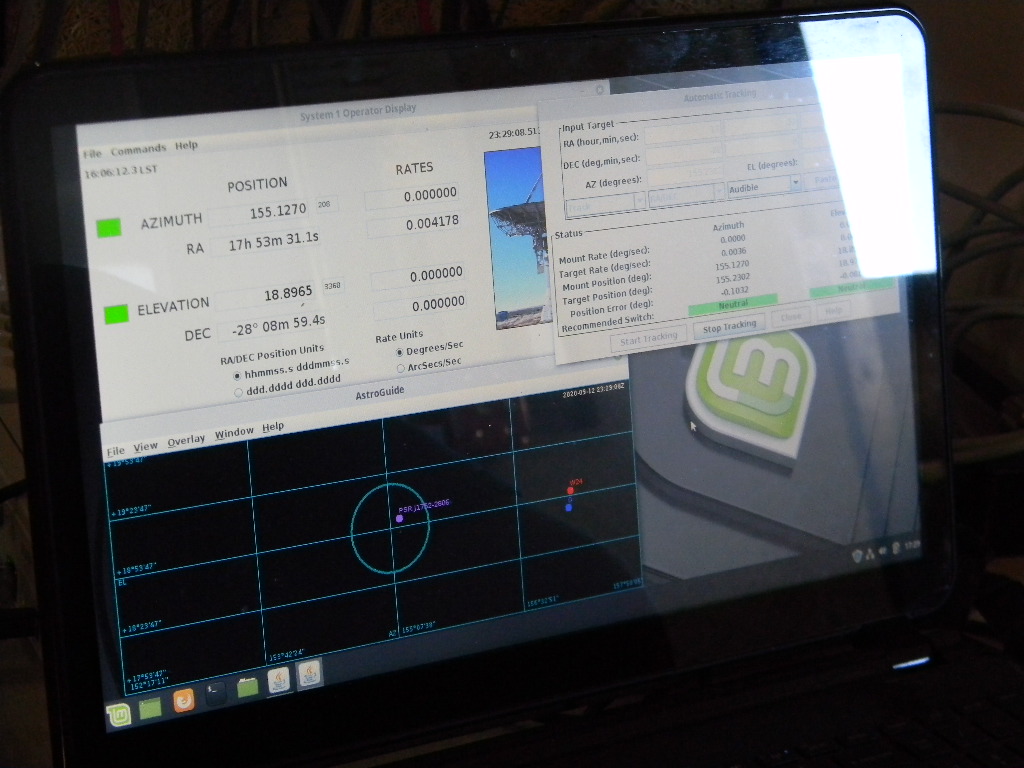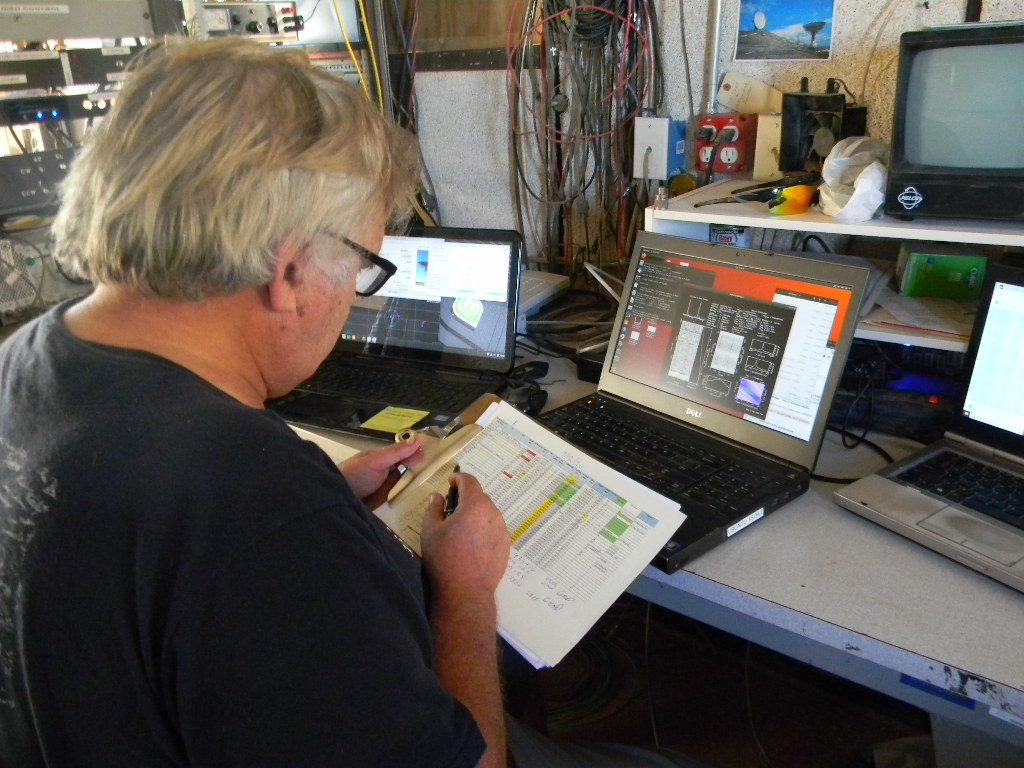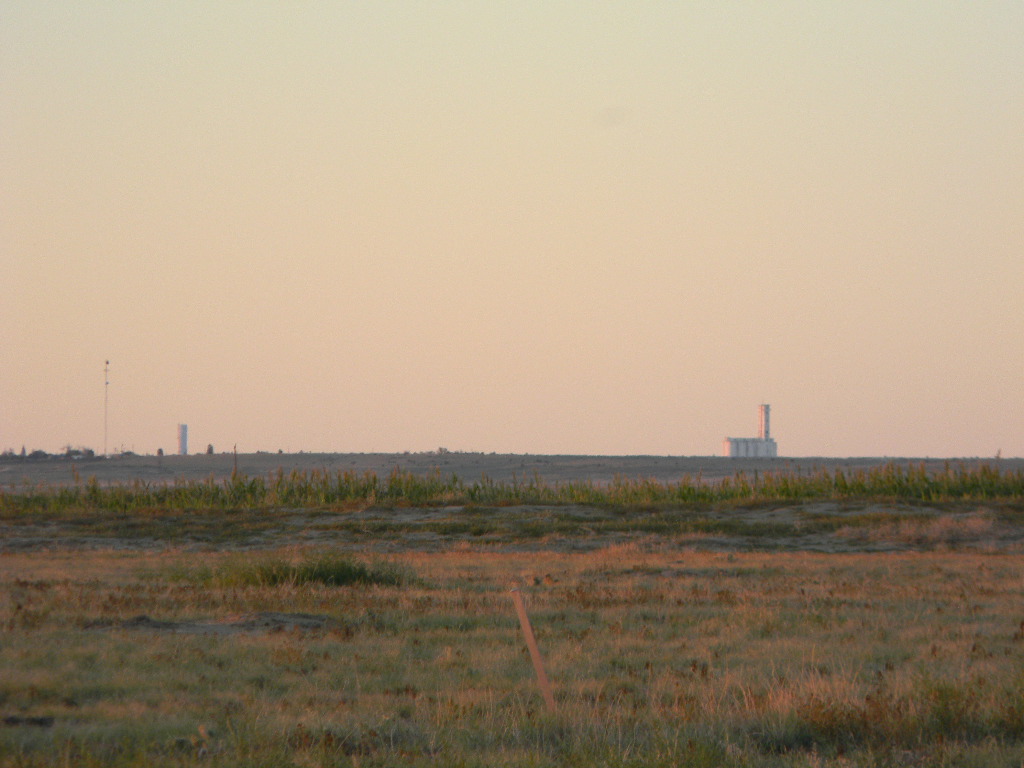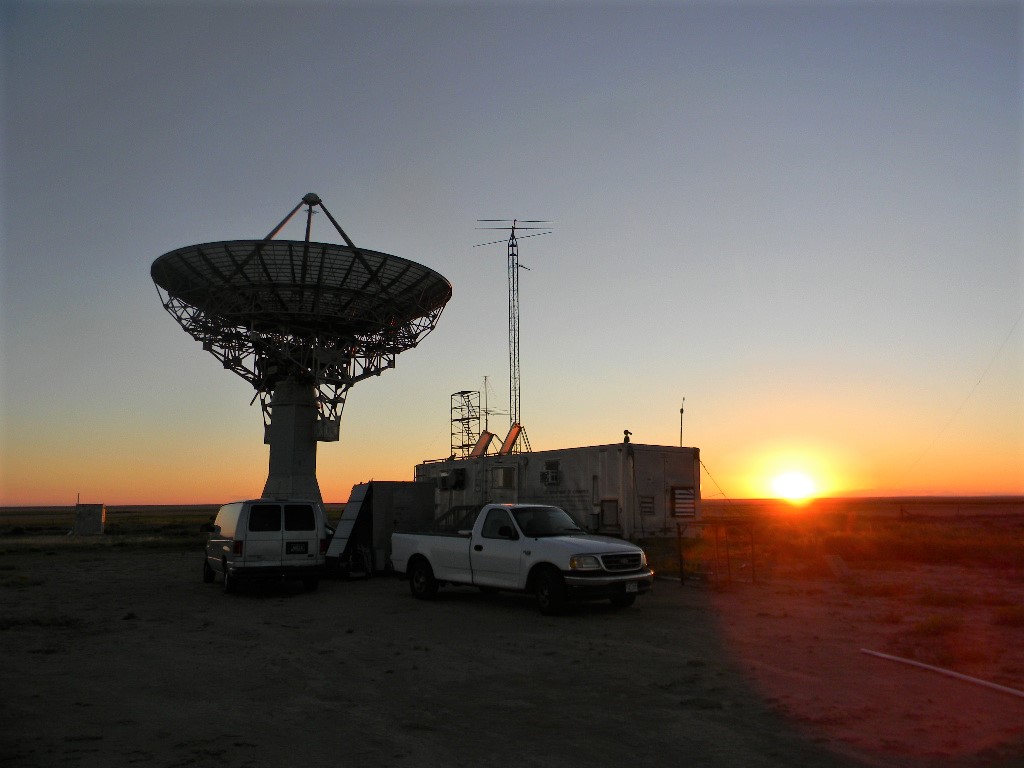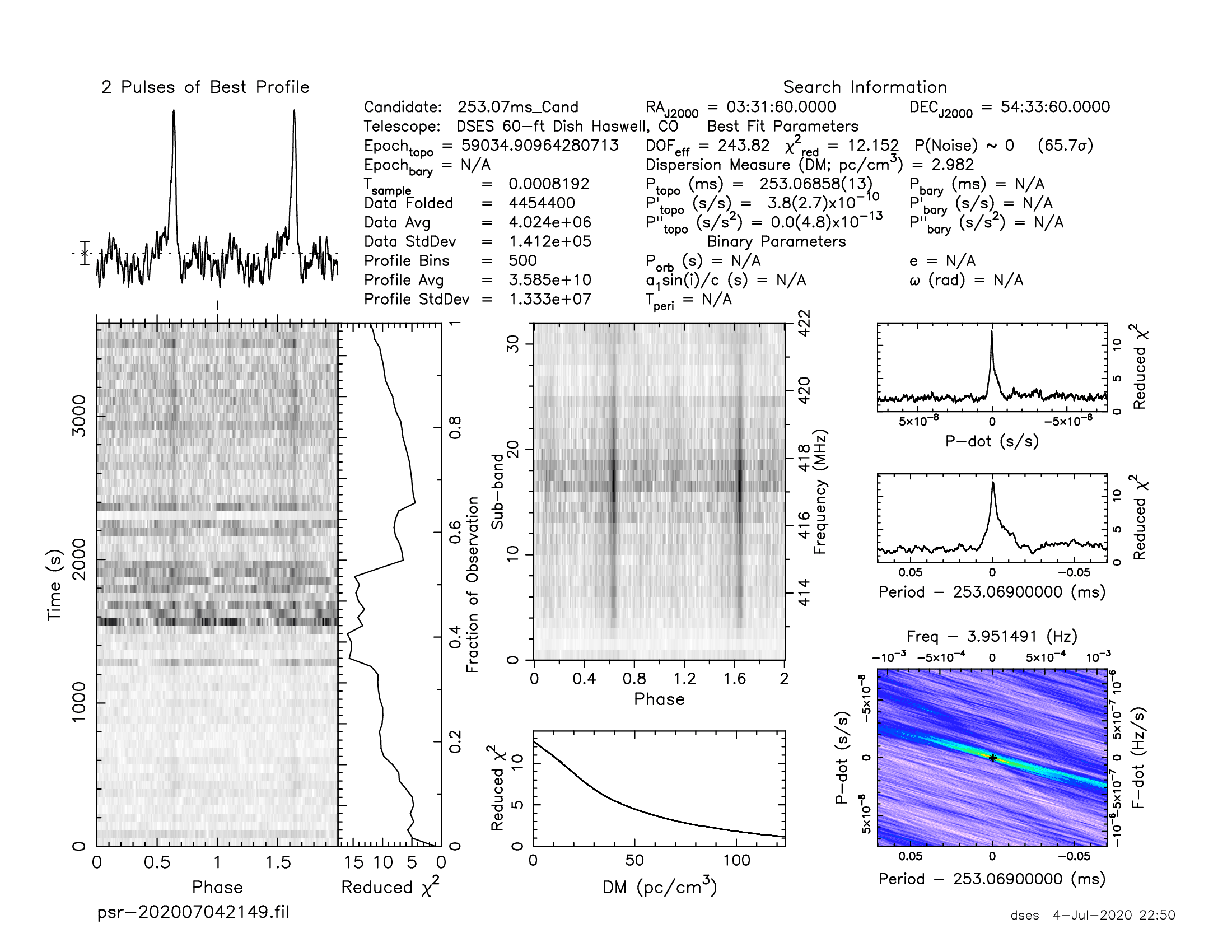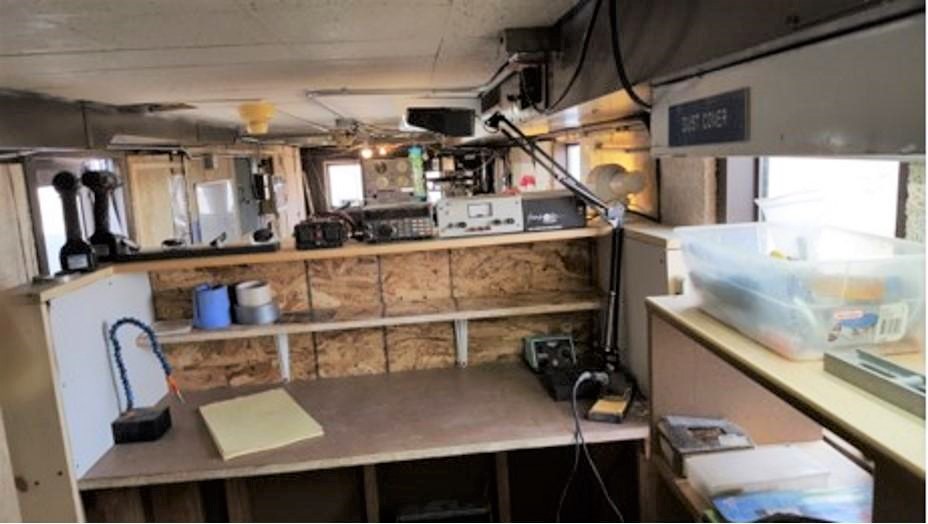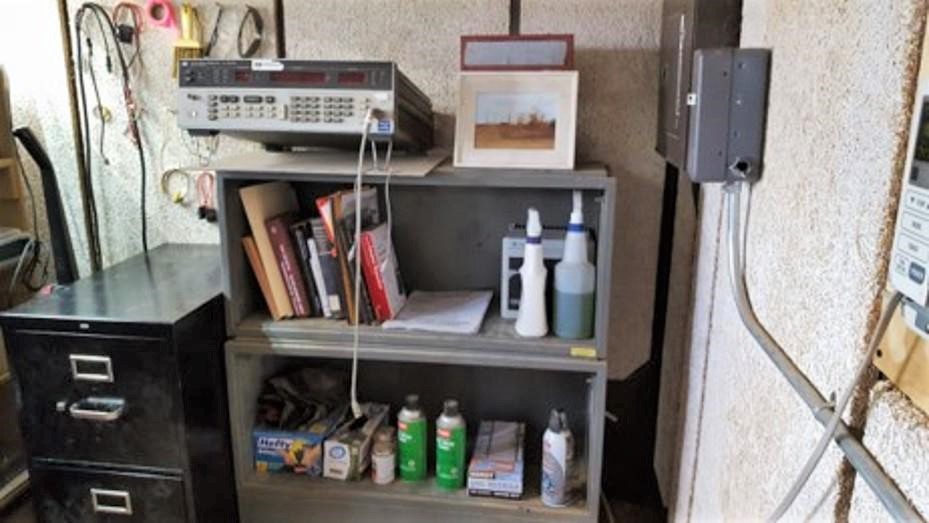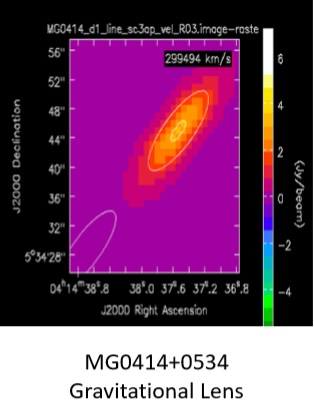Text and photos by Gary Agranat. Analysis pdf by Rich Russel.
On Saturday September 12, 2020 an observing team of Rich Russel, Bob Haggart, Bill Miller, and Gary Agranat spent the day observing pulsars. This is the first observing session since we recalibrated the 60-foot antenna azimuth pointing the weekend before. The team observed 3 pulsars we had not seen before. Plus several other pulsars were attempted. The team spent the whole day at the site, from about 9 AM to 7 PM.
The pulsar signals are so faint that we cannot detect them directly. To observe them, we have to point to the correct celestial coordinates and then track that point as the Earth rotates. While we are pointed, our computer accumulates the signal data. We need at least a half hour continuously tracking the position. At this session some of our observing runs lasted 2 hours, for the fainter objects. At previous sessions we have tracked for as long as 4 hours.
After the observing track, we have our software process the data. The random background noise should cancel itself out. But the pulse signals should build up with time. If we have the correct timing interval of the pulses, and if everything else is working, the computer display will show the pulses, and several other parameters.
Pulsars are very unusual objects. These are what remain of massive stars (greater than 5 solar masses) after they use up all their fuel for nuclear burning. These more massive stars fuse heavier and heavier elements at their cores until they start to fuse iron from silicon. Unlike the fusion of other elements, iron requires energy to fuse, rather than produce energy. The sudden reduction of energy at the core drops the temperature and pressure there. The pressure at the core is no longer enough to counter the weight of the star’s material above it. Gravity is now the stronger force, and the material above collapses in on the center. The pressure and temperature at the core then becomes even higher, which starts new reactions that fuse the matter at the center to neutrons, and and which also generates neutrinos. The outer layers falling in at great speed bounces back out. The result is a supernova explosion. What remains is the neutron star at the center. It is extremely massive and compact. And like an ice skater rotating faster as the arms are brought in, the star’s rotation speeds up immensely. The star’s magnetic field also has become compressed and much more intense. Charged particles will rotate around the magnetic field lines, with very high energy. Whenever charged particles are forced to deviate their paths from a straight line they emit electromagnetic energy, like visible light and radio. At the neutron star’s poles, this energy is channeled out, with immense energy. Because the magnetic poles are generally not at the same spots as the rotational poles, the beam of this light and radio is spun around like a light house. If Earth happens to be in the path of such a beam, we detect that as a pulsar. So that’s what we’re observing. These neutron stars are hundreds and thousands of light years away.
Pulsars were first discovered by accident in 1967, by Jocelyn Bell (now Jocelyn Bell Burnell) who was then a graduate student at Cambridge University. Bob contributed a recent photograph of her, posed by some radio telescopes. We now proudly have that displayed on the wall above our computer displays.
Because the observing runs take a while, for this session we decided to try watching some videos. Bob brought a DVD player and a large monitor. Gary brought some educational videos, including one about the Crab Nebula and pulsars. Rich brought some movies.
This is a summary of our observing results: http://dses.science/wp-content/uploads/2020/09/11-Pulsars-Observed-so-Far-9-12-20.pdf.
On this work trip the team also inspected damage to our ham radio antennas, damage probably from the storm weather over the past months. 7 radials at the base of the vertical antenna were damaged. And the 3 element Yagi antenna on tower was slightly tilted along its longitudinal boom.
Tumbleweeds also had accumulated again at the bunker ramp. Some of the surrounding fence had also been damaged from the weather. Rich Russel brought some fencing to use in the future, to place over the immediate entrance path to the bunker door.
Repair of the ham antennas and ramp clearing will be planned for a future work trip.
Below is a photo narrative of the day’s work.
It was an excellent day’s work.
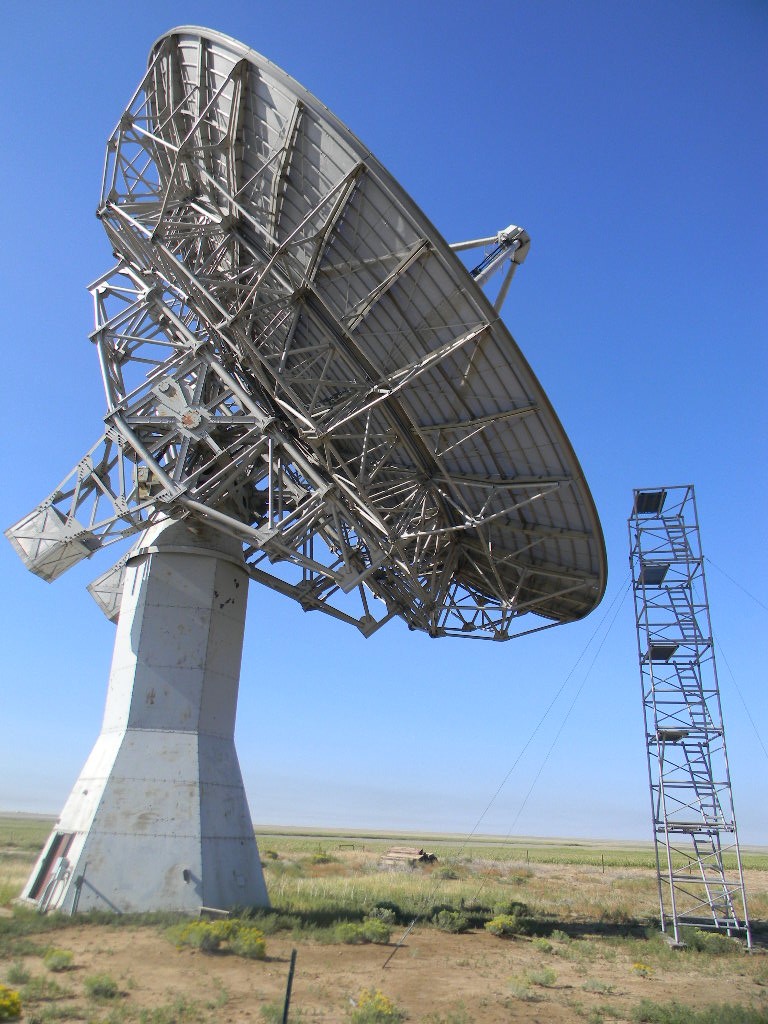
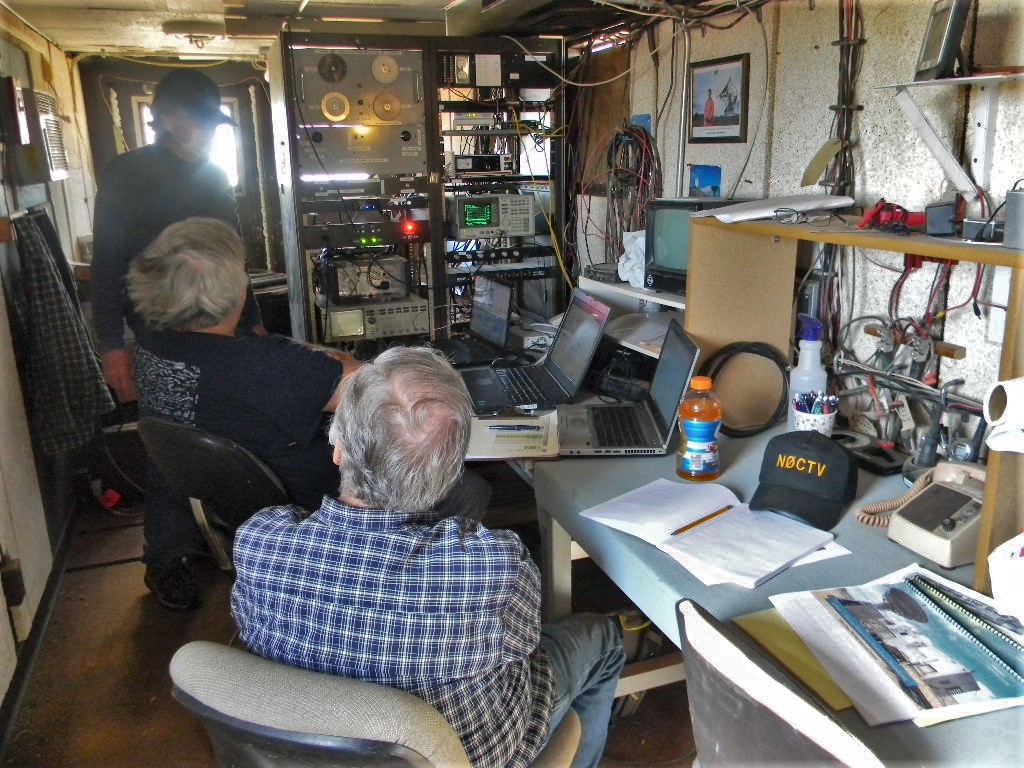
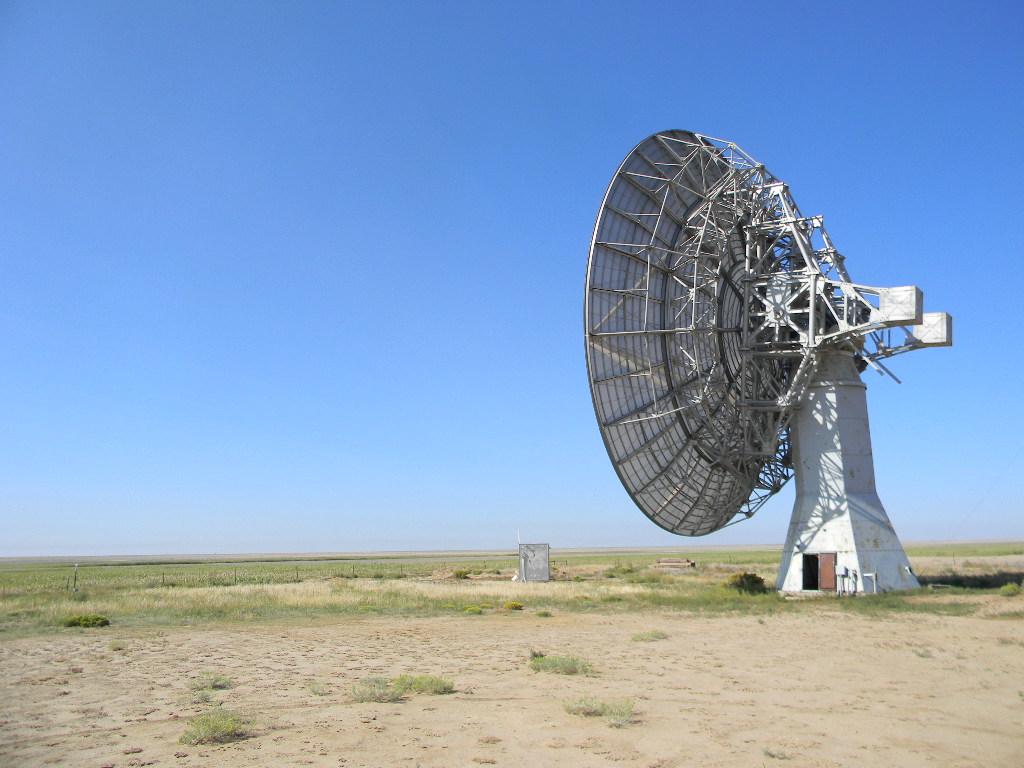
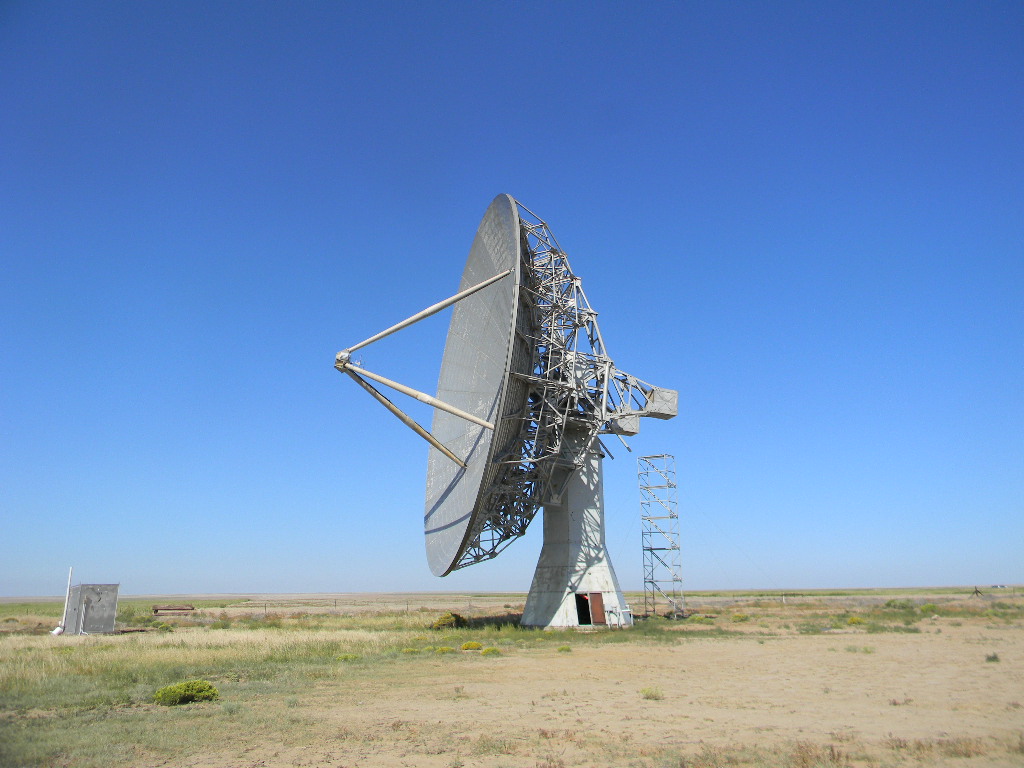
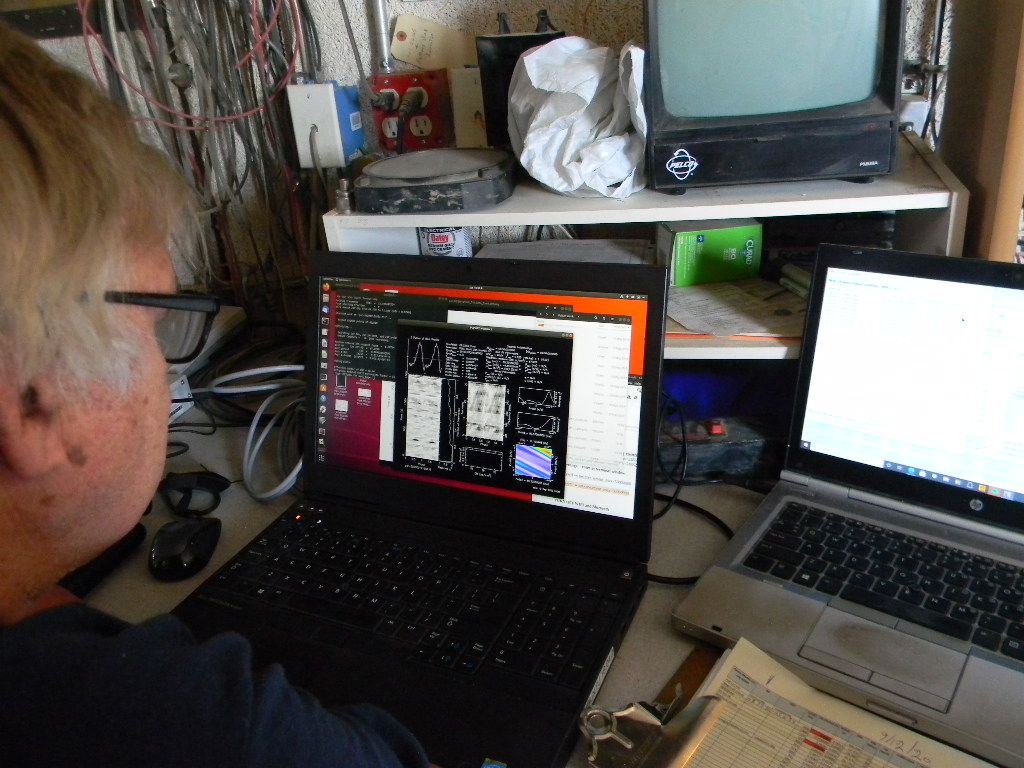
The two graphs in the center right tell us we don’t have a definitive measure of a pulse rate, and a steady change in pulse rate. The pulsars are generally slowing down with time, at a very slow but measurable pace. The display is showing the algorithms cannot fit a pattern. If it could, the two peaks would both be centered.

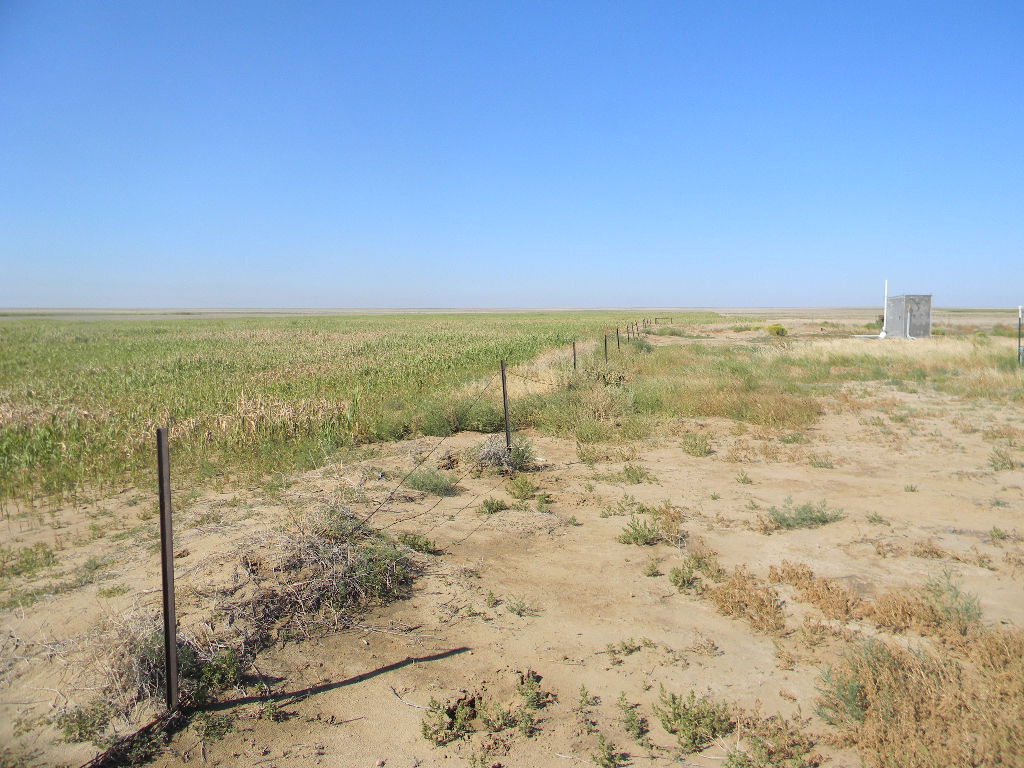

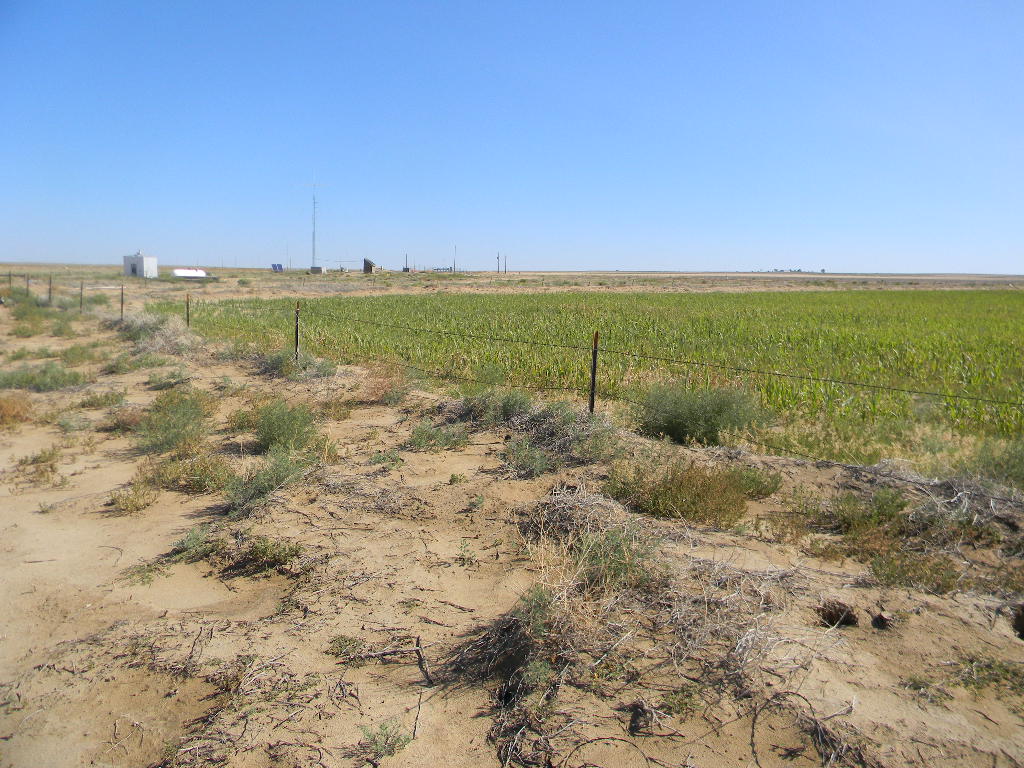
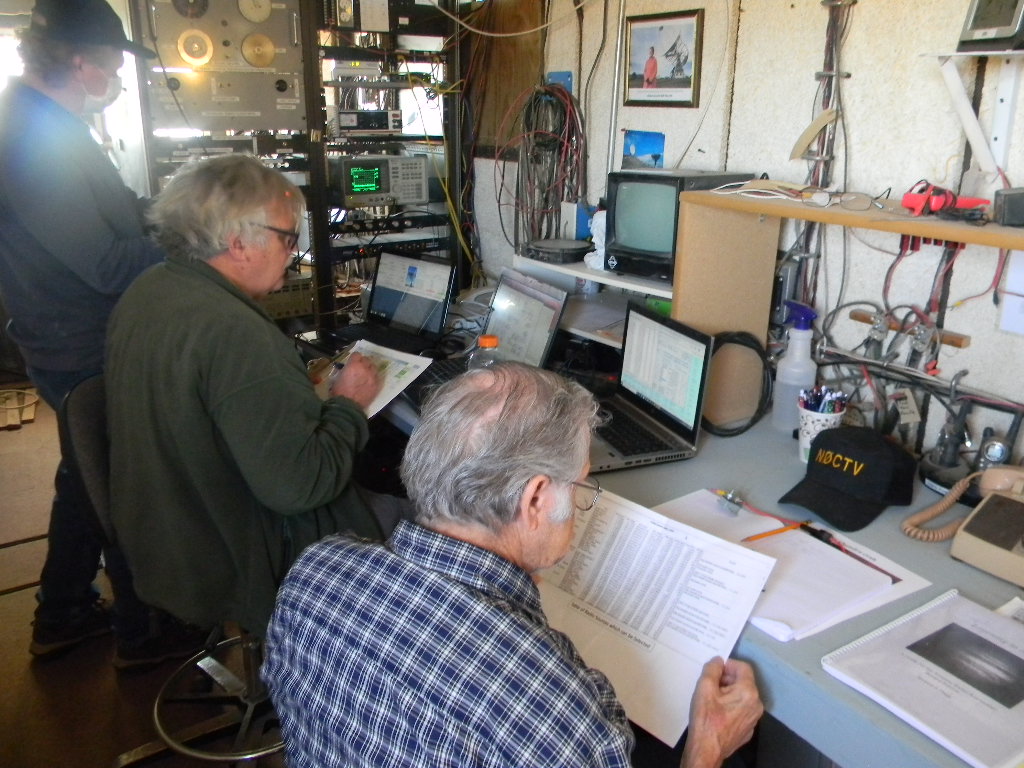

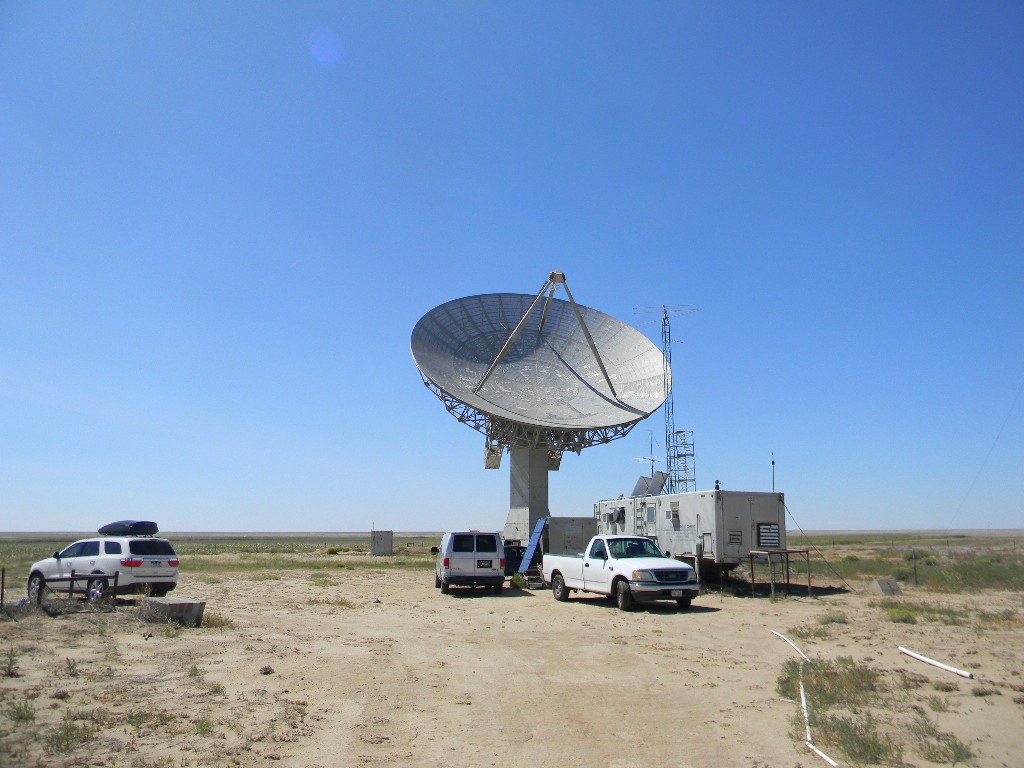
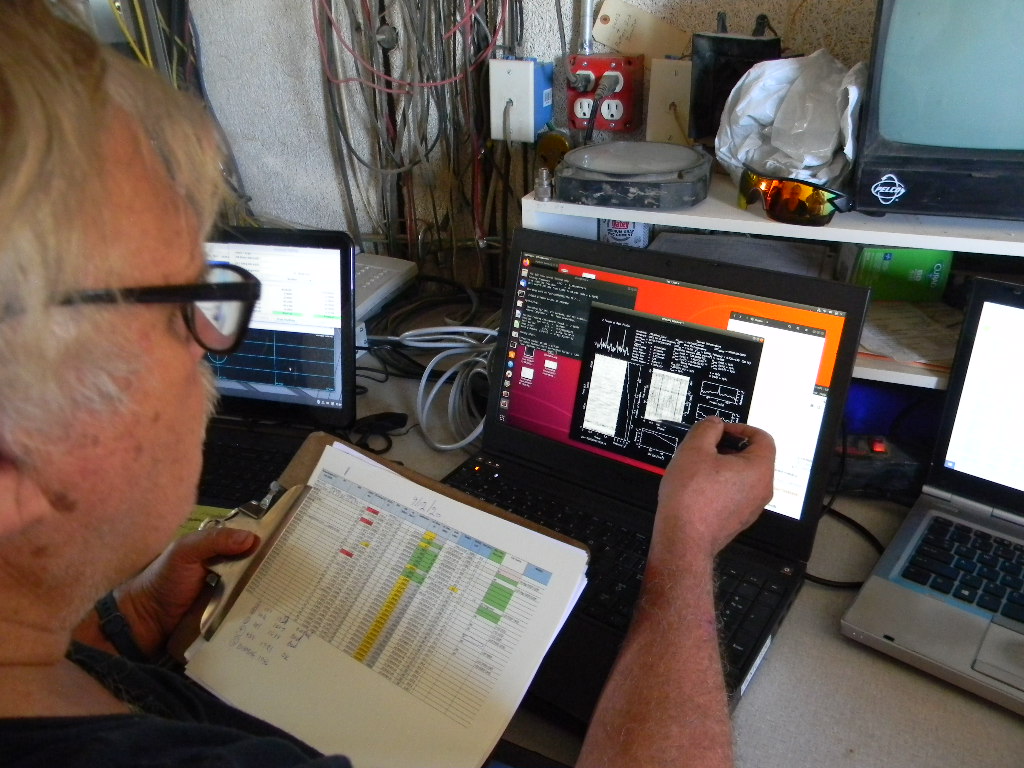
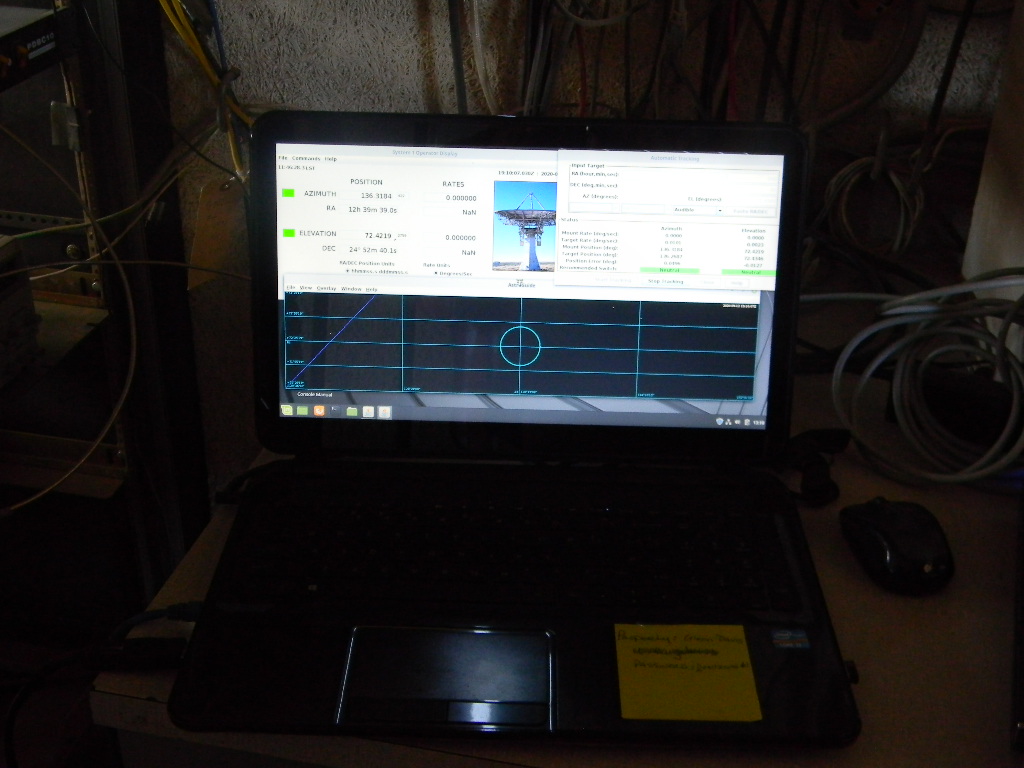
The first accomplishment was to translate the actual azimuth and elevation pointing angles of the antenna through encoders with digital readouts. That azimuth and elevation angles were then correlated with the celestial coordinates at the given time. That required a good timing reference, as well as an accurate fix on our longitude and latitude. We now take care of that timing and position fix with GPS.
The upper part of the screen shows the direction the antenna is aimed at, in both azimuth and elevation angles, and the celestial coordinates of Right Ascension (RA) and Declination. There is more on the right side that was added later which I will discuss shortly.
The next development was to have a visual reference of the celestial sky, with its coordinate grid system and celestial objects we are interested, displayed on the computer, together with where the antenna is pointing. You see that display in the lower half of the screen. How wide a beam angle our antenna can see (like the field of view you see in an optical telescope) depends on the wavelength of the radio waves we are using. At a wavelength of 70 centimeters (about 400 MHz frequency), the beam width is about 2 degrees for our dish antenna. At wavelength of 21 centimeters (about 1420 MHz where the spectral line of neutral hydrogen is), the beam width is about 0.8 degrees. The software calculates the appropriate beam width and shows that as a circle on the display.
Within the last three months, our software team succeeded in creating a system that will now automatically point and keep tracking a celestial object or any other sky position. As part of this package, the software has a database of celestial objects we may be interested to look at, with their celestial coordinates. The database is updatable. If an object we want is in our database, it will appear on our sky coordinates display, we can point to it with our cursor, and the antenna will slew to point to it and then track it. We can also enter data manually. The software and hardware have safety stops, so that the antenna cannot be pointed below a certain limit above the horizon. And the antenna has azimuth limits, so that our cables to the antenna feed in the pedestal don’t wrap around with too many turns. The software also is programmed to avoid direct pointing towards the sun.
Because it makes the display much more user friendly, the display shows the visible stars and constellations as well. (You can click the image to enlarge it.)
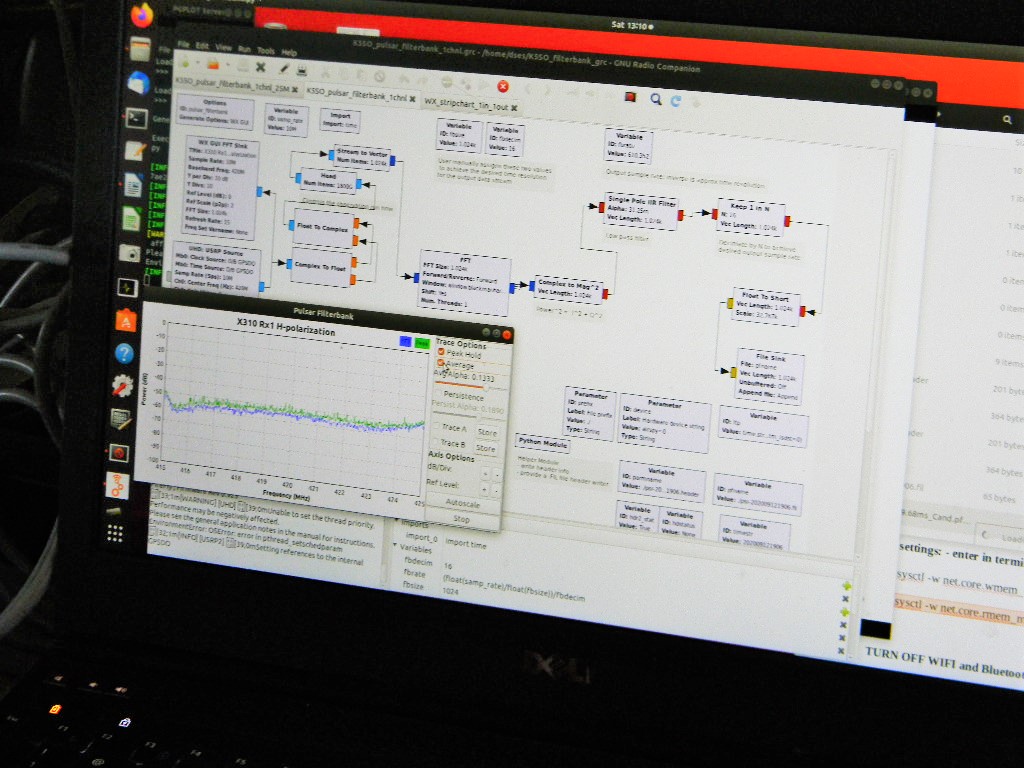
The green line shows the peak maximum of the signal over the course of the run. Earlier in the day we were seeing persistent radio signals, for us interference, at around 390, 406, 408, 410, and 432 MHz.
